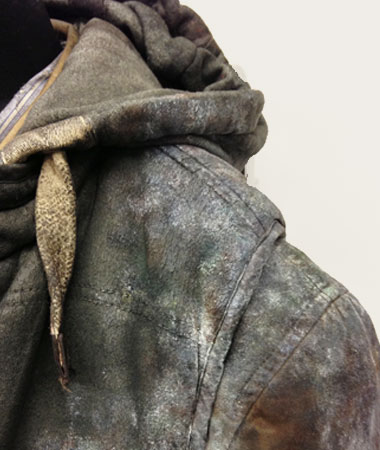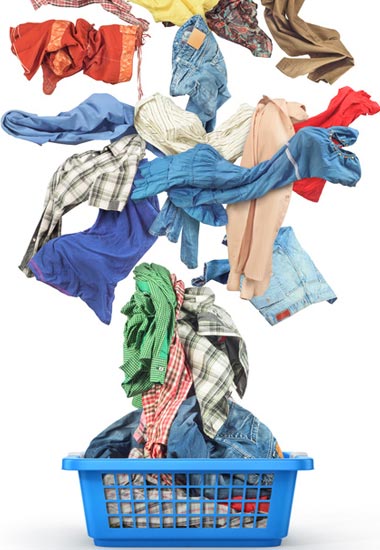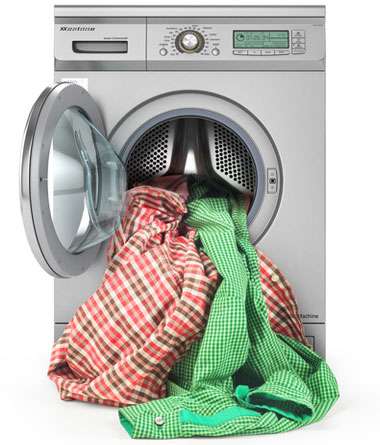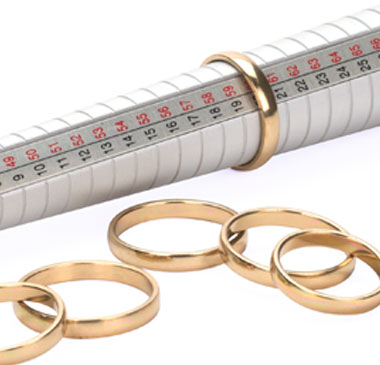PATIN-A Blog – Based on Experience
This blog shows how to patinate correctly, gives tips for the work in the costume department, shows the newest trends and introduces products and their use.
The main focus lies on costume distressing, leather working and textile dyeing. We show trends of the trade and aids for costume design.
Tips for dyeing in the washing machine with Dylon & DEKA
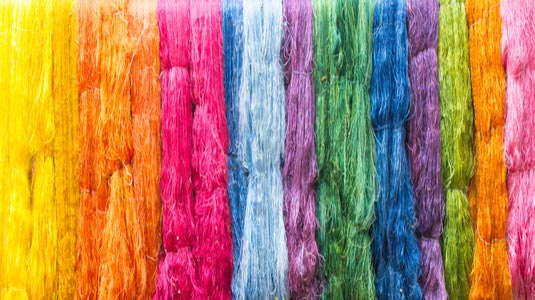
Dyeing in the washing machine is a breeze
and particularly recommendable for large fabric items, as machine dyeing guarantees a beautiful and even dye. u2028u2028
1. The dyes
Dypro (Dylon) Multi-Purpose Dye, DEKA L Textile Dye and DEKA aktuell Textile Dye are perfect for use in the washing machine. Of the three, however, DEKA series „L“ is the less colourfast, although easier to use. u2028
With an additional bath in the Fixative DEKA 111L, fabric dyed with Dypro (Dylon) Multipurpose Dye and DEKA series „L“ may be handwashed in water up to 30°C. To dye projects which are most colourfast (machine-washable under the highest temperatures), use DEKA 'aktuell' or DEKA 'Machine Fabric Dye'.
2. The fabrics u2028
All white or light-coloured natural fibres (i.e. cotton, linen, batiste, flax as well as viscose and rayon) can be dyed perfectly in the washing machine.
It is not advisable to dye silk and wool in the washing machine. These fibres should be dyed by hand. Synthetic fabrics do not absorb the dye and mixed fabrics (i.e. 40% polyester and 60% cotton) only absorb the dye partially and unevenly. u2028The higher the percentage of synthetic material within the mixed fabric, the weaker and uneven the impact of the dyes. Make sure to check the label of the textiles to be dyed before beginning. u2028
If the fabric has been chemically treated (sizing, for example) or previously washed with fabric softener, wash the fabric thoroughly using no washing powder and no fabric softener before starting. You can also wash it with DEKA-Textilfit or have it dry cleaned but without chemical treatment (waterproofing or sizing for example). This is very important as otherwise the fabric will not take up the dye.
Keep an eye out for spots in the material, because spots will not be covered or „overdyed“. Spots will not disappear through dyeing. It is often the case that spots form which only become visible through dyeing, particularly in white textiles which have been stored for some time. In addition, dyeing will not completely cover areas which are simply worn away, although dyeing may aid in evening out the colour of the fabric.
u2028Fabrics which are usually washed at 60°C should also be dyed at this temperature. These are generally the best fabrics for dyeing. It is also possible to dye at 30°C for fabrics normally washed at this temperature, but it is best to dye these fabrics with DEKA aktuell. u2028When dyeing fabrics which are already a certain colour remember that the old colour and the new dye will mix, leading to a third new colour. It is only possible to go from light to darker, thus a purple T-shirt cannot be dyed yellow. u2028u2028
3. The washing machine
The rubber gasket around the door of the washing machine may become discoloured. This is only an aesthetic problem, for it will not rub off or damage any other laundry.
The normal liquid capacity of an average washing machine (with 4,5 kg load space) is approximately 15 to 20 litres. u2028
The maximum amount of fabric that can be dyed in these washers is 1kg dry weight, in order to let the dye circulate freely and evenly. Make sure to weigh the material before dyeing. u2028u2028
Do not set the machine to a cost-efficient or energy-saving cycle. The higher the temperature and the water content, the better the dyeing. u2028The minimum dyeing time is 40 minutes. In some machines the main cycle may be shorter than 40 minutes. In this case, set the dial back to the wash mode once again, before the dyebath is pumped out. u2028
Allow the washer to complete its program, including a rinse with cold water. This will ensure enough time, and an adequately rinsed project as well. u2028u2028
4. The dyeing process
DEKA series 'L':
For the desired colour intensity, see the chart below for instructions on the exact amount of salt and dye.
Lay out the fabric to be dyed and put the required amount of salt into the fabric, folding it into a loose bundle. Place the fabric-salt bundle into the washer.
Dissolve the fabric dye in 2 litres of hot water, prepared separately. Set the machine to the main washing cycle (without a „prewash“) and to the desired temperature, according to the fabric’s needs - between 60° C and 95° C. After the water has finished filling the machine, add the dissolved dye. Add 1 litre of warm water. u2028
Allow the machine to wash as normal and program a cold rinse cycle for the end, to rinse the fabrics.
DEKA aktuell: u2028
For the necessary amounts of salt, dye and fixative to achieve a specific colour intensity, see the chart below. u2028
Lay out the fabric to be dyed and put the required amount of salt into the fabric, folding it into a loose bundle. u2028
Place the fabric-salt bundle into the washer. u2028
Dissolve the dye thoroughly in 2 litres of hot water, prepared separately. u2028
Set the washing machine at 60° C to the main washing cycle (without a „prewash“) or at the temperature at which the fabric is normally washed. u2028
After the water has completed filling the basket, add the prepared dye. Dissolve the proper amount of fixative in 2 litres of hot water.
After the dye has been in the wash for 5 minutes, begin to slowly add the fixative. Add 1 litre of warm water.u2028
Allow the wash cycle to complete itself. To make sure all extra dye is washed out of the fabric as well as out of the washing machine, wash the project one more time, this time with a detergent for fine fabrics, on the gentle cycle. u2028
Results from dyeing are dependent on the amount of powder in the dyebath, the amount of dyeing time, the temperature of the dyebath, and the fabric used, as well as other factors.
DEKA Machine Fabric Dye:
Dissolve the dye in 2 l of hot water and additionally also dissolve the reactive agent in 2 l of hot water, in a separate container.
Put the adequate amount of kitchen salt into the machine drum (If you use less salt, you will obtain a lighter shade).
Set the machine on 60°C (or 40°C for gentle cycle) main washing cycle and wait until the item is soaked in water.
When the drum begins to run, add the dissolved dye through the washing powder compartment.
After 5 minutes, add the dissolved reactive agent slowly through the washing powder compartment plus 1 l of hot water.
Run a main wash cycle of 40 minutes minimum (or otherwise stop the cycle before the water is pumped down and repeat it).
Let your machine complete the main cycle.
Leave the dyed items in the machine and wash them with mild detergent according to the fabric nature.
This will rinse the excess dye and clean the machine.
Dypro (Dylon) Multi Purpose Dye:
Thoroughly dissolve the dye with 100 g of salt in 500 ml of boiling water (best to let it simmer for a few minutes). Now put the washer on "main cycle" (without a prewash) at a temperature of 60°C to 95°C, according to the fabric. After the water has run into the machine add the prepared dye and then add 1 L of warm water.
Leave the project in the washer after the main cycle has been completed and finish with a cold cycle to rinse.
Before dyeing please note:
Dyes with a proportion of red should be filtered through a fine cloth or a pantyhose (works very well: underwear) to prevent little red or purple spots of colour from appearing on the dyed material. This applies only to Dypro (Dylon) Multi-Purpose Dye, DEKA 'L' Textile Dye and DEKA aktuell Textile Dye - machine dyes dissolve completely in the washer!
These are the colours that contain red pigments:
Dypro (Dylon)
60 Peach, 39 Tangerine, 32 Scarlet, 09 Pagoda Red, 12 Rose of Paris, 13 Carnival Pink, 44 Cerise, 10 Cherry Flame, 11 Bordeaux, 15 Windsor Purple, 34 Olive Green, 22 Reindeer Beige, 53 Desert Dust, 65 Havanna Brown, 07 Coffee
DEKA L
Orange, scarlet, bright red, ruby, salmon, old rose, carmine, wine, lilac, violet, chestnut, mid brown, old gold and beige.
DEKA Aktuell
Orange, signal red, strawberry red, wine, heather violet, chestnut brown, chocolate brown, blue lilac, raspberry red, fuchsia
5. The drying process u2028
When the final project is hung up to dry, make sure that it is clipped as close as possible to the edges. u2028Do not fold it over a clothesline, for the dye will not dry evenly and will leave a darkened stripe where the fabric was folded. u2028If the project is hung up inside, cover the floor with plastic, to protect it from any drops of excess dye. Do not dry the project in the direct sun or near a heat source. u2028It is impossible to discern the final colour of the fabric when it is wet; it is always darker in this stage.
6. For subsequent washing
Fabric dyed with DEKA Textile Dye L should always be washed separately by hand and with mild detergent. If the project has been treated with Fixative DEKA 111L after it has been dyed, it can be washed more easily, with the washing machine set for up to 30°C. u2028
Projects made with DEKA aktuell Textile Dye should be washed separately the first two times. After that, they can be added to your regular wash at temperatures up to 95°C. u2028u2028u2028
Please note: u2028
Avoid direct skin contact with the concentrated dye. While working with DEKA Textile Dye L and DEKA aktuell Textile Dye wear rubber gloves.u2028In rare cases, direct skin contact with the dye might lead to allergic reactions. Do not inhale the dye powder. Keep away from children. u2028
| Intensity chart for washing machines with 4,5 kg load space | ||||||
DEKA aktuell | DEKA-Series 'L' for 1 kg of fabric (dry weight) | |||||
| Dye | Fixative | Salt | Dye | Salt | ||
| Full-tone Half-tones Pastels | 4 packs 2 packs 1 packs | 4 packs 2 packs 1 packs | 2 kg 1 kg 1 kg | Full-tone Half-tone Pastels | 6 packs 4 packs 2 packs | 2 kg 1 kg 1 kg |
| Full-tone Black | 5 packs | 5 packs | 2 kg | *** | *** | *** |
Preparing of the textiles
The textiles to be dyed must be free of sizing, spotless and clean. Textiles, which have been treated with softener, starch or impregnation must be washed several times with washing powder in order to remove all the residues from the fibres.
Dyeing of silk
Silk can also be dyed, but we recommend dyeing by hand, as silk is best washed by hand. Instead of salt use vinegar!u2028u2028
Dyeing of woolu2028
"Wool and all knitted items will mat when dyed at high temperatures". This is not entirely true! The truth is, wool and knitwear should never be dyed in the washing machine. They can be dyed bathing in a large basin - but move them very carefully in the dye bath! Moving them fast will cause unwanted fibre mingling. When rinsing make sure you rinse the wool at the same temperature is has been dyed (and, again, do not move it too much). The rinsing water is slowly cooled down to normal water temperature. If you still have an old-fashioned spin-drier, you can spin-dry them. Always wear rubber gloves as the dye may leave traces on wet hands. Use ordinary vinegar instead of salt!
Nature of the textiles
Only fabrics of the same material and the same weave will produce the same dye. Mixed materials with a proportion of synthetics may come out as mixed dye results as only the cotton proportion in the fabric will be dyed, the synthetic fibres keep their original colour. It may be quite fun to play with this property to achieve lovely effects!
Finishing treatment
After dyeing wash the dyed items with washing powder in order to wash out the excess colour. That also cleans the machine. When drying avoid sunlight and direct heat. Always wash separately for the first two times. Use mild detergents.
Temperature
The washing temperature of the dyed items should correspond to the dyeing temperature (if you have dyed at 60°C, you can wash at up to 60°C - the same applies to 90°C)
What can be the reason for defective dyeing?
Very often it is due to the lack of salt or an insufficient amount of salt. Another reason can be that the amount of dye was too little or the dye temperature too low.
If you use ordinary table salt instead of PATIN-A dye salt make sure you use non iodized salt.
What can be the reason for uneven dyeing?
Very often jeans and jackets are provided with a persistent chemical finish, which is an obstacle to even dyeing. This can also happen with stretch materials with a proportion of elastane and fabrics with a proportion of synthetics superior to 20%, which may not be dyed evenly either.
Have fun & brilliant results!
 We ship worldwide
We ship worldwide Top customer satisfaction!
Top customer satisfaction! Many payment options
Many payment options
